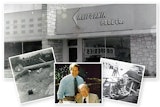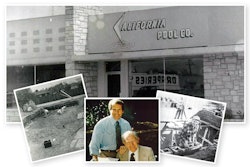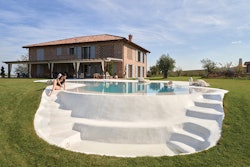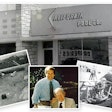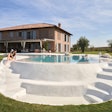
It wasn't until a few years ago that Tumber tried its hand at a new feat, specifically one that would mean more energy efficiency and a more streamlined system. The company's goal of incorporating variable-frequency drives into water feature and fountain applications still had to be researched and developed, a process that took a few years, says Jason Jayne, business manager.
Testing 1, 2, 3
The company initially installed a test system at owner Randy Tumber's home, where he was already running his waterfalls on "a low-efficiency sludge-type submersible pump 24 hours a day," Jayne says.
These pumps are a great thing, he adds, and made to run, but they burn out after a few years and need to be replaced. The group wondered if they could find a way to apply a variable-frequency drive to the system, so they called on Doug Wells, president of Wells Energy in Caledon East, Ontario, to bring the whole system together.
"We basically used their knowledge of the electrical side of things to take some of these commercial controllers or drives and get the right size that we would need to tie it in with a submersible pump," says Jayne. "We had to go to three-phase power to be able to make that happen. And from there, you could tie it into an automation system, like the Pentair system, if you want, which is the one we've been mostly using."
Jayne describes the process as pretty straightforward, but he recognizes that because this technology has yet to become widespread, it takes a few meetings of the minds to get things going.
"We've tied some of them in with home automation systems and just sort of installed others with our own equipment. . . you know, buy the traditional pool pad and program it there and let it run and do its thing," says Jayne.
He likens the use of variable-frequency drives on water features to their use in swimming pools.
"We basically just applied that concept to water features, but there were no products out there yet where it was an off-the-shelf solution. That's why we used our engineer connection to just be able to put those pieces together."
The Value Of A Dollar
Jayne says the company's decision to incorporate variable-frequency drives came about when customers began to pay attention a bit more to where their money was going.
"Water features have become more popular in the last five to 10 years," says Jayne, "and bigger is better for a lot of rural and estate properties that we're working in. But it wasn't really too much an issue about energy consumption until a couple of years ago when money was getting tighter."
Like most of the variable-speed equipment on the market today, the upfront investment is substantial but the return keeps customers happy.
"The cost of operating a pool [or water features] is always kind of the hidden part of ownership," says Jeff Sanchez, director of sales and marketing for Speck Pumps. "I think if you are a savvy service person, you can actually show the homeowners that by changing from [a regular] pump to a variable-speed pump over time you're going to save energy.
"Once you pay for the pump, all the rest of it is savings. Being green is good, but saving money is the driving force. At least that is my impression."
And it's an impression that Jayne says makes sense. Tumber's typical client installs water features that require flow at a rate of more than 200 gallons per minute. Jayne says the company's first project where a variable-speed drive was installed had a flow rate of 800 gallons per minute.
"It was an extensive water feature. You start saving more and more money when you get into pushing that much water, so it just made sense to do it without having these ludicrous energy bills," Jayne says.
He estimates that the cost of adding this type of equipment can run anywhere between $5,000 to $10,000, a cost that makes sense if you're already going to build that large of a water feature. Besides, he adds, you'll get that money back in one to two years.
A Variable Future
Not only does potential energy conservation play a role in the future of variable-speed drives in water feature applications, but government regulation does, too.
California's Title 20 and 24 are pushing these types of pumps and drives, adds Sanchez. "And [similar legislation] is going into effect in Florida next year. This legislation is helping the popularity along. As people start to use them and notice the savings, they'll become even more popular.
"To be ready for the future, thinking about that type of pump is a benefit not only for the client but also for the builder."
Comments or thoughts on this article? Please e-mail [email protected].
















